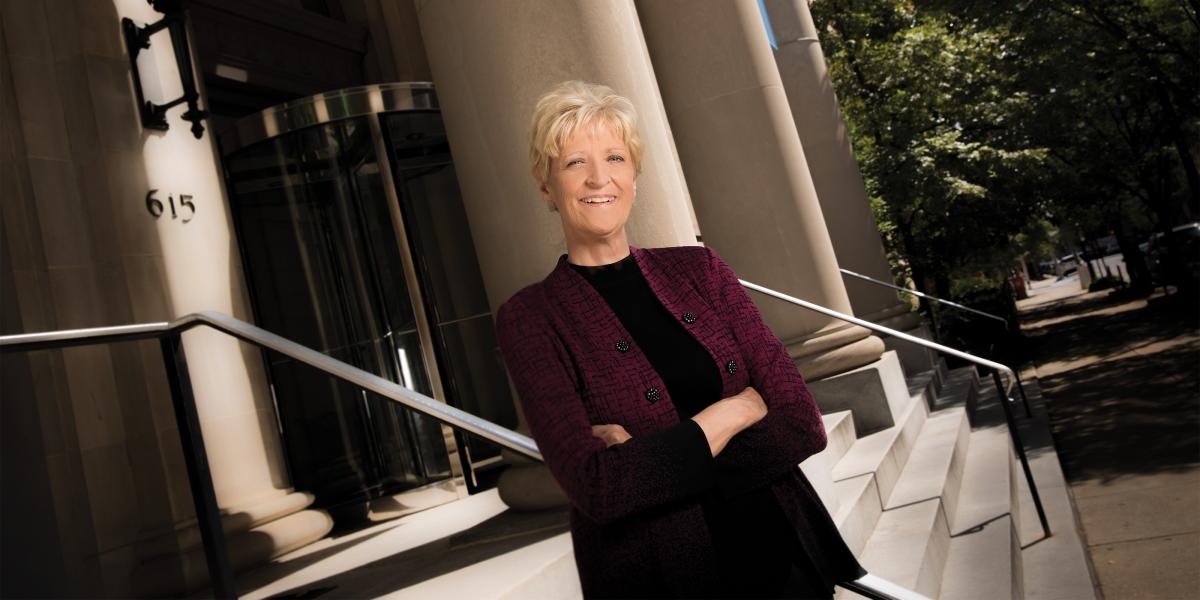Leveling Up
With some legendary role models, women have ascended to leadership positions in public health.
As we anticipate the 100th anniversary of the ratification of the 19th Amendment granting women the right to vote, the history—and future—of women here at the School and across public health is on my mind.
Even before the women’s suffrage movement opened doors, remarkable women were helping shape the practice of public health in the early 1900s. But it would be many decades before women were recognized for their academic leadership in the field.
When I recently read a draft chapter of Karen Thomas’ sequel to Health and Humanity, her history of the School from 1935 to 1985, I finally appreciated how long it took to get us to where we are today. What stood out to me more than anything else was that in 1991 I was named the 18th woman professor—only 17 had gone before me!
When the School opened its doors in 1918, about half of the faculty were women. They mostly held junior positions as research associates, working alongside more senior men. However, by all accounts, they played a significant role in major public health discoveries. For example, E.V. McCollum, who discovered vitamins A and D, was assisted by several women research associates. Nina Simmonds, Ernestine Becker, and others coauthored some of his most notable publications demonstrating the relationship between nutritional deficiencies and clinical symptoms of disease.
It was not until 1957 that Margaret Merrell became the first woman full professor in the School. Anna Baetjer followed five years later. Each of these women provided more than 30 years of dedicated service to the School before being promoted to the rank of professor.
Having women role models meant the world to me as a student and a young faculty member. Seeing someone who looks like you in a position that you’re striving to attain is critically important—its value is supported by strong evidence.
I was fortunate. Outstanding women leaders taught me from the beginning of my career at Johns Hopkins. I learned biostatistics in the 1970s from Helen Abbey, the fourth woman to be appointed professor in the School. I also learned much from Edyth Schoenrich (#7, who became a senior associate dean not long after I arrived), Barbara Starfield (#8), Karen Davis (#10 and the first woman chair of any department in the University), Sue Baker (#13 and the subject of the terrific profile “Change the World, Baker”), Pearl German (#15), and Laura Morlock (#16). They all influenced me personally and professionally.
Having women role models meant the world to me as a student and a young faculty member. Seeing someone who looks like you in a position that you’re striving to attain is critically important—its value is supported by strong evidence. These early leaders paved the way for me to become the first woman dean of the Bloomberg School. Today, six of the 10 department chairs and five of nine vice deans and associate deans are women. And among the 10 top-ranked schools of public health in the U.S., five are led by women deans.
By the close of 2019, the number of women professors at the Bloomberg School stands at 75, accounting for 34% of all full professors. And the pipeline continues to grow: 52% of associate professors and 68% of assistant professors are women. These percentages reflect the field’s changing demographics: In 2018, 72% of all students admitted to schools and programs of public health were women.
As the late public health historian Elizabeth Fee noted, women’s growing role in public health should not be surprising. Its roots reach back to the Progressive Era of the early 1900s, when women were prominent in the social reform movement. “Women still see public health as a way to combine scientific interests and social concerns, and cite these social concerns as attracting them to specific fields within public health,” Fee wrote in a 1989 Journal of Public Health Policy article.
Only now, they are being recognized for their achievements and defining the future of both the science and practice of public health.
There’s still much work to be done to foster leadership opportunities for women. Mentorship, training, and support for a balance in work and family are needed to ensure that the increasing numbers of women coming into public health today will have opportunities to be leaders in the field tomorrow.
Their perspectives are needed to solve persistent problems in public health. The devastating toll of sex trafficking of women documented in the powerful article “What Doctors Are Missing” in this issue is a prime example. Another: In many countries, women still don’t have access to health services they need. This is true even in the U.S., especially when it comes to reproductive health and family planning services.
The next step for women is to fulfill the promise of the women’s suffrage movement: not only to vote but to be voted in. We need more women to run for office. Despite constituting half the population, women occupy fewer than one-quarter of the seats in the U.S. Congress. And only about one-fifth of governors and mayors are women. More women’s voices—both here at home and globally—are needed to shape sound policies that will improve health and well-being for all.
Diversity drives excellence. As a school and a field, we have realized some success in achieving gender equity, but we are lagging behind when it comes to ensuring diversity in terms of race, ethnicity, socioeconomic background, and sexual identity. To solve the daunting public health challenges of our era and the next, we need leaders with varied backgrounds, experiences, and perspectives.
It’s going to take all of us.
